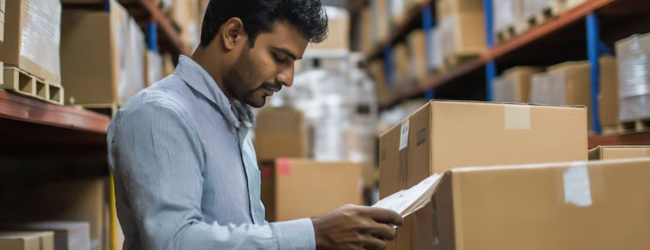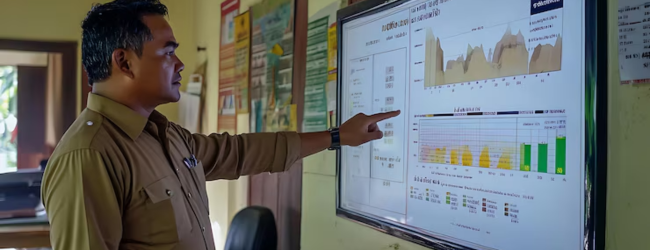Table of contents
- Why Consider Exporting from India?
- 10 easy steps to get your export business started
- Step 1: Obtain Your PAN and Open a Current Account
- Step 2: Secure an Import-Export Code (IEC)
- Step 3: Register with Relevant Export Promotion Councils (EPCs)
- Step 4: Understand Your Target Market
- Step 5: Find Buyers and Secure Orders
- Step 6: Arrange for Export Finance
- Step 7: Comply with Export Procedures and Documentation
- Step 8: Choose the Right Mode of Transport and Logistics
- Step 9: Ensure Quality Control and Packaging
- Step 10: Understand Payment Terms and Realize Payments
- Conclusion
- Frequently Asked Questions (FAQs)
Are you dreaming of taking your Indian-made products to the global market? Do you want to know how to start export business in India? Exporting can be a fantastic way to expand your business, tap into new revenue streams, and build a global brand. While it might seem daunting at first, breaking it down into manageable steps makes the process much easier. This guide will walk you through 10 simple steps to kickstart your export journey in India.
Why Consider Exporting from India?
India offers a unique advantage for businesses looking to export. Some compelling reasons include:
- Large Manufacturing Base: India has a robust and diverse manufacturing sector, producing a wide range of goods from textiles and agricultural products to engineering goods and pharmaceuticals.
- Skilled Workforce: A large pool of skilled labor helps in producing quality goods at competitive prices.
- Government Support: The Indian government actively promotes exports through various schemes, incentives, and policies. For instance, the “Make in India” initiative encourages domestic manufacturing and export promotion.
- Growing Global Demand: There’s an increasing global appetite for Indian products due to their quality and competitive pricing.
- Access to Diverse Markets: India’s strategic location provides access to markets in Asia, Africa, Europe, and the Americas.
10 easy steps to get your export business started
Step 1: Obtain Your PAN and Open a Current Account
Before you can even think about international trade, you need the basics in place:
- Permanent Account Number (PAN): This is your primary identification for all business-related activities in India.
- Current Account: You’ll need a dedicated current account with a bank authorized to deal in foreign exchange. This account will be used for all your export-related transactions. Most major banks in India offer this facility.
Step 2: Secure an Import-Export Code (IEC)

The Import-Export Code (IEC) is a 10-digit code mandatory for anyone involved in import or export activities in India.
- You can obtain this from the Directorate General of Foreign Trade (DGFT).
- The application process is primarily online through the DGFT website.
- Keep all your business details and documents handy during the application.
This is a crucial step as no export can happen without a valid IEC.
ALSO READ | Top 5 High-Profit Home-Based Businesses for Aspiring Entrepreneurs
Step 3: Register with Relevant Export Promotion Councils (EPCs)
Export Promotion Councils are organizations that promote and support exports of specific product categories.
- Identify the EPC relevant to your product. For example, if you’re exporting textiles, you would register with the Apparel Export Promotion Council (AEPC). For engineering goods, the Engineering Export Promotion Council of India (EEPC India) would be relevant.
- Registration with an EPC provides you with valuable market information, trade leads, participation opportunities in international fairs, and guidance on export procedures.
💡Pro Tip: If you want to start a business but have too many doubts, connect with a business expert from Boss Wallah for guidance – https://bw1.in/1116
Step 4: Understand Your Target Market

Thorough market research is essential for export success. You need to understand:
- Demand for your product: Is there a market for what you want to export?
- Competition: Who are your competitors in the target market? What are their strengths and weaknesses?
- Pricing: What is the acceptable price range for your product in that market?
- Regulations and Standards: What are the import regulations, quality standards, and labeling requirements in your target country?
- Cultural Factors: Are there any cultural nuances that might affect your product or marketing strategy?
Investing time in market research can save you from costly mistakes later. You can leverage resources like the Indian Trade Portal and reports from international trade organizations.
Step 5: Find Buyers and Secure Orders
Once you understand your target market, the next step is to find potential buyers. Some common methods include:
- Participating in International Trade Fairs: These provide a platform to showcase your products and interact directly with potential buyers. Many Indian EPCs sponsor participation in such events.
- Online Marketplaces: Platforms like Alibaba, IndiaMART, and others connect suppliers with international buyers.
- Direct Marketing: Reaching out to potential importers or distributors in your target market.
- Utilizing Government Resources: The Indian government and EPCs often facilitate buyer-seller meets and provide databases of potential buyers.
Securing your first export order is a significant milestone! Ensure you have clear agreements on product specifications, quantity, pricing, payment terms, and delivery schedules.
Step 6: Arrange for Export Finance
Exporting involves costs, and you might need financial support, especially in the initial stages. Options for export finance in India include:
- Pre-shipment Finance: Loans to cover the cost of raw materials, processing, and packing before shipment. Banks offer various pre-shipment credit facilities.
- Post-shipment Finance: Financial assistance after the goods have been shipped, often against the export documents.
- Export Credit Guarantee Corporation of India (ECGC): ECGC provides insurance cover to exporters against the risk of non-payment by foreign buyers. This is highly recommended to safeguard your financial interests.
Step 7: Comply with Export Procedures and Documentation
Exporting involves a set of procedures and documentation that need to be followed meticulously. Key documents include:
- Commercial Invoice: Details of the goods, price, and terms of sale.
- Packing List: Specifies the contents of each package.
- Bill of Lading/Air Waybill: Document issued by the shipping line or airline acknowledging receipt of the goods.
- Certificate of Origin: Certifies the country where the goods were produced.
- Shipping Bill: A crucial document for customs clearance.
- Other specific documents: Depending on the product and the importing country, you might need additional certificates (e.g., health certificates for food products).
Engaging a reliable customs broker can significantly simplify this process. They are experts in export regulations and documentation.
Step 8: Choose the Right Mode of Transport and Logistics

Selecting the appropriate mode of transport is crucial for timely and cost-effective delivery of your goods. Common options include:
- Sea Freight: Suitable for large volumes and less time-sensitive shipments. India has major ports like Mumbai, Chennai, and Kolkata.
- Air Freight: Faster but more expensive, ideal for high-value or time-critical goods. Major international airports in India include Delhi, Mumbai, and Bengaluru.
- Road and Rail: Primarily used for inland transportation to the port or airport.
You’ll also need to consider packaging, labeling, and insurance for your shipment.
Step 9: Ensure Quality Control and Packaging
Maintaining the quality of your products is paramount for building a sustainable export business.
- Implement stringent quality control measures at every stage of production.
- Ensure your packaging is appropriate for international shipping and meets the requirements of the importing country. Proper packaging protects the goods from damage during transit and enhances their appeal.
Consistent quality is key to building trust with international buyers and securing repeat orders.
ALSO READ – Top 10 Profitable DIY Business Ideas to Start in 2025
Step 10: Understand Payment Terms and Realize Payments

Getting paid on time is crucial for your cash flow. Common international payment methods include:
- Letter of Credit (LC): A secure payment method where the buyer’s bank guarantees payment to the seller upon fulfillment of certain conditions.
- Documentary Collection: Payment is made against the presentation of shipping documents.
- Advance Payment: The buyer pays before the goods are shipped. This carries the least risk for the exporter.
- Open Account: The exporter ships the goods and expects payment at a later date. This carries the highest risk.
Negotiate favorable payment terms and understand the risks associated with each method.
Need Expert Guidance?
Starting a business can be challenging, but you don’t have to do it alone! At Boss Wallah, our 2,000+ business experts are ready to provide valuable insights and guidance. Whether you need help with marketing, finance, sourcing, or any other area of any business, our business experts are here to help you succeed- https://bw1.in/1116
Confused about Which Business to Start?
Want to start your own business but unsure which one to choose? Explore Boss Wallah, where you’ll find 500+ courses by successful business owners, featuring practical, step-by-step guides on starting and growing various businesses. Find your perfect business idea today – https://bw1.in/1111
Conclusion
Starting an export business in India might seem like a complex undertaking, but by following these 10 easy steps, you can navigate the process effectively. Remember to conduct thorough research, comply with regulations, maintain product quality, and build strong relationships with your international buyers. With dedication and a strategic approach, your Indian-made products can successfully reach and thrive in the global marketplace. The potential for growth and success in the export sector is immense for Indian businesses.
Frequently Asked Questions (FAQs)
1 . What is the minimum investment required to start an export business in India?
- The initial investment can vary significantly depending on the product, scale of operations, and target market. It can range from a few lakhs for small-scale exports to crores for larger ventures. Costs include registration fees, marketing expenses, initial production or sourcing costs, and shipping expenses.
2 . Which products have high export potential from India?
- India has a diverse range of products with high export potential, including textiles and garments, agricultural products (spices, rice, fruits), engineering goods, chemicals, pharmaceuticals, leather products, handicrafts, and software services.
3 . Do I need a website for my export business?
- While not strictly mandatory initially, having a professional website is highly recommended. It serves as your online storefront, builds credibility, and helps potential buyers find you globally.
4 . How can I find reliable international buyers?
- You can find buyers through participation in international trade fairs, online B2B marketplaces, direct marketing efforts, referrals, and by leveraging the resources of Export Promotion Councils and government agencies.
5 . What are the common risks involved in export business and how can I mitigate them?
- Common risks include non-payment by buyers, currency fluctuations, political instability in the importing country, and logistical challenges. Mitigation strategies include using secure payment methods like Letters of Credit, hedging against currency fluctuations, obtaining export credit insurance from ECGC, and working with experienced logistics partners.
6 . What kind of government support and incentives are available for exporters in India?
- The Indian government offers various schemes like the Merchandise Exports from India Scheme (MEIS), Duty Drawback Scheme, and Market Access Initiative (MAI) to provide financial assistance and promote exports. EPCs also offer guidance and support.
7 . Is GST applicable to export sales?
- Generally, export supplies are treated as zero-rated supplies under the Goods and Services Tax (GST) regime in India. This means that no GST is levied on export sales, and exporters can claim refunds for any input tax credit accumulated.
8 . How long does it typically take to receive payment from an international buyer?
- The payment timeframe depends on the agreed-upon payment terms. It can range from immediate payment in the case of advance payments to 30-90 days or even longer under certain documentary collection or open account terms. Letters of Credit offer a more secure but potentially longer payment cycle depending on the conditions.


